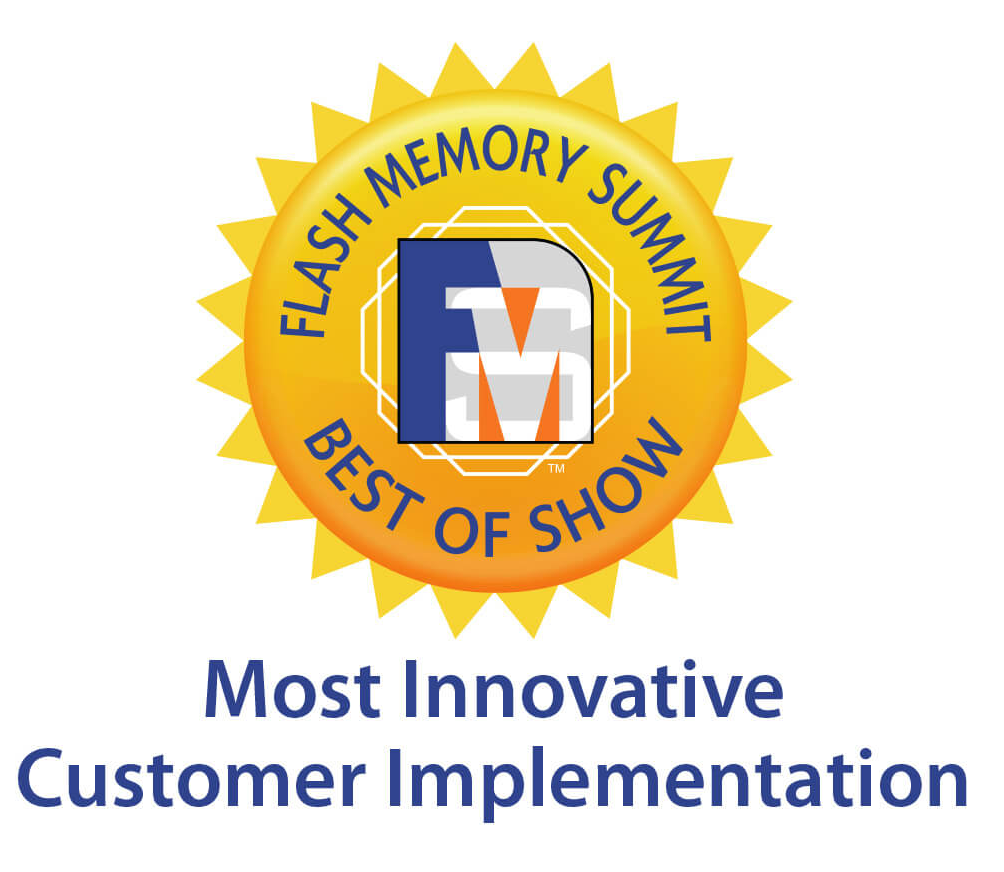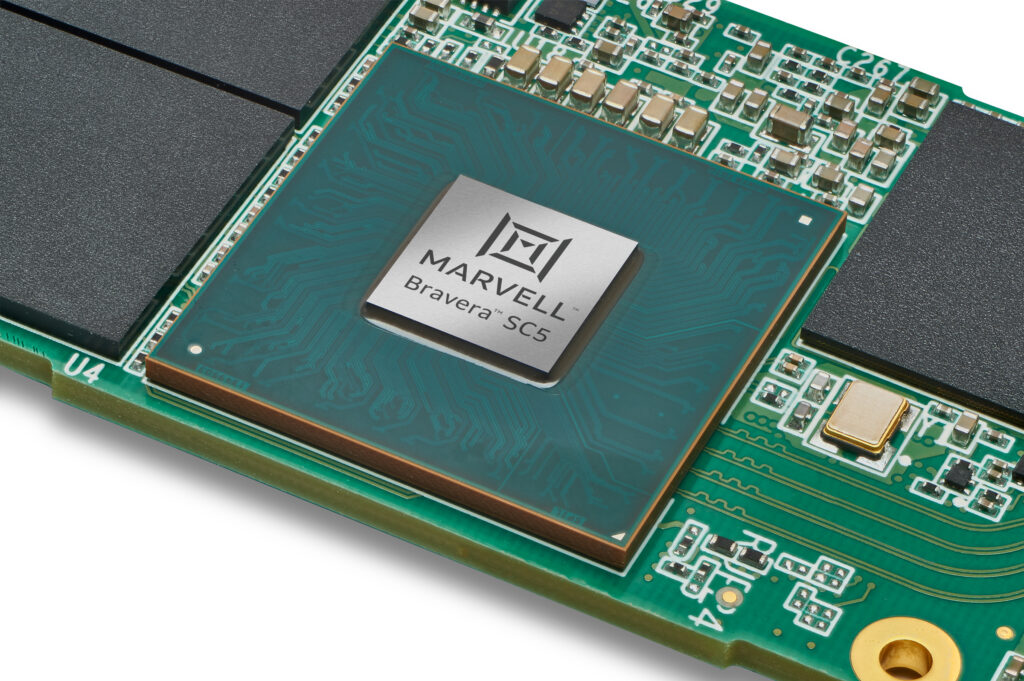

By Chander Chadha, Director of Marketing, Flash Storage Products, Marvell
AI is all about dichotomies. Distinct computing architectures and processors have been developed for training and inference workloads. In the past two years, scale-up and scale-out networks have emerged.
Soon, the same will happen in storage.
The AI infrastructure need is prompting storage companies to develop SSDs, controllers, NAND and other technologies fine-tuned to support GPUs—with an emphasis on higher IOPS (input/output operations per second) for AI inference—that will be fundamentally different from those for CPU-connected drives where latency and capacity are the bigger focus points. This drive bifurcation also likely won’t be the last; expect to also see drives optimized for training or inference.
As in other technology markets, the changes are being driven by the rapid growth of AI and the equally rapidly growing need to boost the performance, efficiency and TCO of AI infrastructure. The total amount of SSD capacity inside data centers is expected to double to approximately 2 zettabytes by 2028 with the growth primary fueled by AI.1 By that year, SSDs will account for 41% of the installed base of data center drives, up from 25% in 2023.1
Greater storage capacity, however, also potentially means more storage network complexity, latency, and storage management overhead. It also means potentially more power. In 2023, SSDs accounted for 4 terawatt hours of data center power, or around 25% of the 16 TWh consumed by storage. By 2028, SSDs are slated to account for 11TWh, or 50%, of storage’s expected total for the year.1 While storage represents less than five percent of total data power consumption, the total remains large and provides incentives for saving. Reducing storage power by even 1 TWh, or less than 10%, would save enough electricity to power 90,000 US homes for a year.2 Finding the precise balance between capacity, speed, power and cost will be critical for both AI data center operators and customers. Creating different categories of technologies becomes the first step toward optimizing products in a way that will be scalable.
By Kristin Hehir, Senior Manager, PR and Marketing, Marvell
 Powered by the Marvell® Bravera™ SC5 controller, Memblaze developed the PBlaze 7 7940 GEN5 SSD family, delivering an impressive 2.5 times the performance and 1.5 times the power efficiency compared to conventional PCIe 4.0 SSDs and ~55/9us read/write latency1. This makes the SSD ideal for business-critical applications and high-performance workloads like machine learning and cloud computing. In addition, Memblaze utilized the innovative sustainability features of Marvell’s Bravera SC5 controllers for greater resource efficiency, reduced environmental impact and streamlined development efforts and inventory management.
Powered by the Marvell® Bravera™ SC5 controller, Memblaze developed the PBlaze 7 7940 GEN5 SSD family, delivering an impressive 2.5 times the performance and 1.5 times the power efficiency compared to conventional PCIe 4.0 SSDs and ~55/9us read/write latency1. This makes the SSD ideal for business-critical applications and high-performance workloads like machine learning and cloud computing. In addition, Memblaze utilized the innovative sustainability features of Marvell’s Bravera SC5 controllers for greater resource efficiency, reduced environmental impact and streamlined development efforts and inventory management.
By Kishore Atreya, Director of Product Management, Marvell
Recently the Linux Foundation hosted its annual ONE Summit for open networking, edge projects and solutions. For the first time, this year’s event included a “mini-summit” for SONiC, an open source networking operating system targeted for data center applications that’s been widely adopted by cloud customers. A variety of industry members gave presentations, including Marvell’s very own Vijay Vyas Mohan, who presented on the topic of Extensible Platform Serdes Libraries. In addition, the SONiC mini-summit included a hackathon to motivate users and developers to innovate new ways to solve customer problems.
So, what could we hack?
At Marvell, we believe that SONiC has utility not only for the data center, but to enable solutions that span from edge to cloud. Because it’s a data center NOS, SONiC is not optimized for edge use cases. It requires an expensive bill of materials to run, including a powerful CPU, a minimum of 8 to 16GB DDR, and an SSD. In the data center environment, these HW resources contribute less to the BOM cost than do the optics and switch ASIC. However, for edge use cases with 1G to 10G interfaces, the cost of the processor complex, primarily driven by the NOS, can be a much more significant contributor to overall system cost. For edge disaggregation with SONiC to be viable, the hardware cost needs to be comparable to that of a typical OEM-based solution. Today, that’s not possible.
By Pichai Balaji, Director, Product Marketing, Flash BU, Marvel
Industrial SSDs are specifically designed for high-performance systems where data integrity and reliability are of the utmost importance. Industrial SSDs cover a wide range of applications including industrial data storage, heavy robotics, retail kiosks, medical systems, security surveillance, video monitoring, and gaming, to name a few.
When most people hear the term “industrial SSD,” they immediately think of a ruggedized, high-temperature SSD in a metal casing. While such drives are part of the industrial class of SSDs, most industrial and edge applications have a wider range of requirements in terms of SSD controller hardware, firmware, SSD form factor, drive capacity, endurance, reliability, and use case/workload.
For these applications, it is critical that the SSD meets industrial quality standards, and long-term reliability and performance requirements. These SSD devices must be able to withstand industrial grade temperatures, as well as a higher level of shock and vibration. Some applications need these SSDs to operate in ambient temperatures ranging from -40°C to 85°C. In such extreme conditions, data loss is a serious concern.
Marvell’s 88SS1321/22 SSD controllers are designed to meet the industrial requirements on temperature endurance, longevity, and performance. Marvell’s 88SS1321 device also provides flexibility for the industrial SSD maker to choose the SSD form factor (supports 2.5” / U.2; m.2 2230 to 22110), and choose to use the SSD with or without DRAM (optional).
Exascend recently launched an industrial grade PCIe Gen 4 SSD – the PI4 Series. Powered by Marvell’s 88SS1321 PCIe Gen 4 SSD controller, the SSD offers 3500MB/s performance and can operate in an extreme temperature range of -40°C to 85°C. It offers full disk encryption / TCG OPAL 2.0 in M.2 (2280 & 2242), U.2, E1.S and CFexpress form factors for industrial and ADAS storage applications.
Marvell’s 88SS1321/22 SSD controller hardware is designed to offer SSD firmware the maximum control to optimize SSD level solutions for different workloads in a wide range of industrial and edge applications. The product’s reference design has been validated from standards/spec compliance, as well as from an electrical compatibility perspective. The board design BOM is also cost-optimized for low cost of ownership. More information on these benefits can be found here.
Additionally, various SKUs within the product offer added flexibility to SSD makers, enabling them to address applications that may require DRAM and a wider range of operating temperatures.
With the integration of AI/ML, industrial systems have become autonomous and more distributed in recent years. The proliferation of AI-based IoT (AIoT) devices has increased end-to-end system complexity, pushing compute and storage resources to the edge in order to leverage low-latency 5G connectivity and/or Ethernet Time Sensitive Networking (TSN) for real-time, mission-critical data access and processing.
Innodisk is another industrial SSD maker who has recently launched multiple PCIe Gen 4 industrial-grade SSDs with Marvell’s 88SS1321/22 SSD controllers that can operate with or without DRAM. The Innodisk PCIe 4TE and 4TG-P are the first industrial-oriented PCIe 4.0 SSDs turbocharging 5G and AIoT. The product can work in -40°C and 85°C environments, where some specific applications, including smart streetlights, 5G mmWave, and security inspection cameras, are critical for industrial strength. The PCIe 4TE and 4TG-P support AES-256 encryption and are TCG-OPAL 2.0 compliant.
Other key features of Marvell’s industrial SSD controllers include:
Marvell’s 88SS1321/22 SSD controllers are designed to allow firmware to be optimized for many different applications. A host of SKUs built on the same architecture allow SSD developers to leverage Marvell’s reference design to develop their own SSD for various form factors, capacity, endurance, and reliability standards including ruggedized, high-temp SSDs with metal casings.
Learn more about Marvell’s 88SS1321/22 product series of SSD controllers here.
By Kristin Hehir, Senior Manager, PR and Marketing, Marvell
Data Breakthrough, an independent market intelligence organization that recognizes the top companies, technologies and solutions in the global data technology market, today announced the 2022 winners of its Data Breakthrough Awards. Marvell is thrilled to share that its Bravera™ SC5 SSD controller family was named “Semiconductor Product of the Year” in the Hardware/Components & Infrastructure category.

Marvell’s Bravera SC5 controllers are the industry’s first PCIe 5.0 SSD controllers, enabling the highest performing data center flash storage solutions. By bringing unprecedented performance, best-in-class efficiency, and leading security features, Bravera SC5 addresses the critical requirements for scalable, containerized storage for optimal cloud infrastructure. Marvell’s Bravera SC5 doubles the performance compared to PCIe 4.0 SSDs, contributing to accelerated workloads and reduced latency, dramatically improving the user experience.
“Our Bravera SC5 controllers were developed alongside cloud providers, NAND vendors and the larger ecosystem to meet the critical requirements for faster and higher bandwidth cloud storage,” said Thad Omura, vice president of marketing, Flash Business Unit at Marvell. “This award further validates the innovative feature set our solution brings to address the ever-expanding workloads in the cloud. We thank Data Breakthrough for recognizing the vital role that semiconductors play across the digital data industry.”
The Data Breakthrough award nominations were evaluated by an independent panel of experts within the larger fields of data science and technology, with the winning products and companies selected based on a variety of criteria, including most innovative and technologically advanced solutions and services.
More information about the awards can be found here.